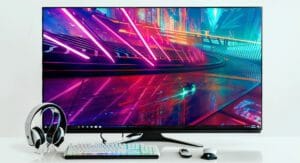Table of Contents
LCD monitor, which stands for Liquid Crystal Display, is a flat display screen commonly used in laptops, desktop computers, and television screens.
These LCD displays are the most common among others, mainly because they are lightweight, produce the best images, and use less power. The display is composed of millions of pixels that form images.
If you are looking for information about LCD Monitors (see HP monitors) then you are at the right place. You will find everything you want to know about LCD Monitor with its definition, description, function, benefits, how to use it, where to buy, and links for reviews and comparisons to make the most out of your investment.
What is an LCD (Liquid Crystal Display) Monitor?
An LCD monitor (Liquid Crystal Display Monitor) is a video display device commonly used in computers and televisions. It is a flat panel display as opposed to the more traditional cathode-ray tube (CRT) for television sets and oscilloscope monitors.

This type of monitor is based on liquid crystals. The LCD monitor comes with the benefits of being thin and easy to install. It also consumes less power, so using LCD monitors minimizes your electricity consumption by a big margin. That makes them ideal as monitors for security cameras among other things.
Also, this flat panel display has other advantages over CRT displays that include higher resolution, brighter images, better contrast ratios, deeper black ranges, more color palettes, and most importantly extremely lower power demands. In most cases, LCD monitors are lightweight and thinner than CRT monitors, which makes them perfect as portable monitors, too.

What are the Types of LCD Monitors?
There are various types of LCD monitors on the market, with each having its pros and cons. Some are designed to provide wide viewing angles, while others are made to provide great image quality. If you are looking for an LCD monitor for your Mac Mini, PC, or laptop, here are the main types to choose from;
TN panels
Twisted Nematic (TN) is one of the most common LCD technologies. It has been the dominant technology for regular home and office displays from 2001 to 2010 until it was replaced by better alternative technologies of In-Plane Switching (IPS), and VA.
It has the worst colors and viewing angles when compared to VA and In-Plane Switching or IPS.
One of the biggest selling points of TN displays is their incredibly fast response time, which is at 1ms. This makes them excellent for competitive FPS gaming, or for that awesome snappy feel when browsing the web or editing photos.
VA panels
Vertical Alignment (VA) panels are a type of LCD display panel that features better contrast ratios and black uniformity when compared to IPS and TN panels.
IPS Panels
IPS (In-Plane Switching) panels come with the best features. Their most distinctive feature is their wide viewing angles both horizontally and vertically.
As a result of this, they are best suited for multi-user or collaborative environments, though it must be said that this kind of technology is also appreciated by individuals who look for wider screen views.
The additional characteristics of this type of LCD monitor include high image quality, adaptability to bright light conditions, color accuracy, and competitive pricing - all factors which have made them very popular.
How do LCD Monitors Work?
Small and large LCD computer monitors produce images using liquid-filled crystals.
The liquid crystals inside the monitor are electrically charged to particular levels after which they will either allow or prevent light from passing through the crystals. This light is then projected onto the pixels, displaying the image.
At the back of the LCD display, there is a backlight that emits white light. It goes through a horizontal polarizer; this is a kind of filter that allows only horizontal polarized light beams to pass through it.
The horizontally polarized light beams go into liquid crystals which bend the horizontal light beams into vertical light beams so they can pass through the vertical polarizer to color filter and the pixels will light up creating images.
What are the Parts of LCD Monitors?
Most modern LCD monitors have several parts that work together to produce an image. The main parts include;
- The panel,
- The cables (power cable and connectivity cables)
- The stand
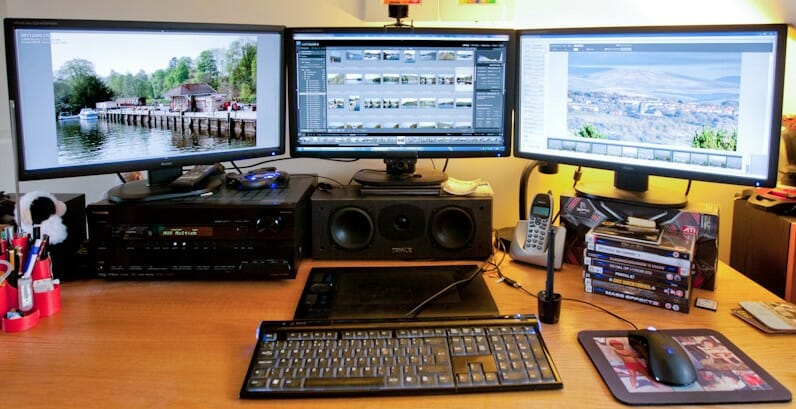
What is the History of LCD Monitors?
LCD Monitor is one of the most important technologies that exist today, especially if you are working on a project. One of the very first LCD monitors was developed in 1970 by inventor J. Fergason (see also who created the first monitor historically).
Before that, cathode ray displays were bulky, consumed a lot of electricity, did not last a long time, and did not produce great images like today’s Acer LCD monitor, Dell LCD monitor, or AOC LCD monitor.
It is not until 1981 when Solartron introduced the first color LCD monitor; his name is always mentioned when one is researching the history of monitors. Since then, LCD monitors have evolved at an alarming rate. Even now, more innovations are being made to make them more durable and useful for customers.
Liquid crystals are made up of organic material that has special properties that change when an electric current is applied to them. This material is sandwiched between two layers. The electric current makes the crystals change their shape so they can either let light through or block it at will.
Who is the Inventor of LCD Monitor?
The inventor of the LCD monitor is inventor J. Fergason. He was a business entrepreneur as well as an American inventor. He was born on January 12, 1934, and died on December 9, 2008.
Before he died, he had over 100 US patents on his name. He began experimenting with liquid crystals when he was hired by Westinghouse Research Laboratories. His research led to the development of a Liquid crystal thermometer and a mood ring.
In 1966, he was invited to join Liquid Crystal Institute. It is here that he made his first LCD display in 1971.
Later, he formed his own company to manufacture LCD display digital watches.

What are the Features of LCD Monitors?
Tests have proved that Samsung monitors such as Samsung u32j590 31.5 16 9 4k UHD LCD monitor and AOC 27b1h 27 LCD monitor black are much better than the traditional cathode ray and Plasma monitors. Why?
In order to have a better understanding of what makes this type of monitor superior, it is first necessary to understand its features which are;
- Are lightweight
- Have wide viewing angles
- Have the best colors
- Are energy-efficient unlike CRTs
- They are cheap
- Have improved contrast ratio
- Have a long life
- Have the best response time and refresh rate
- Their resolutions are high
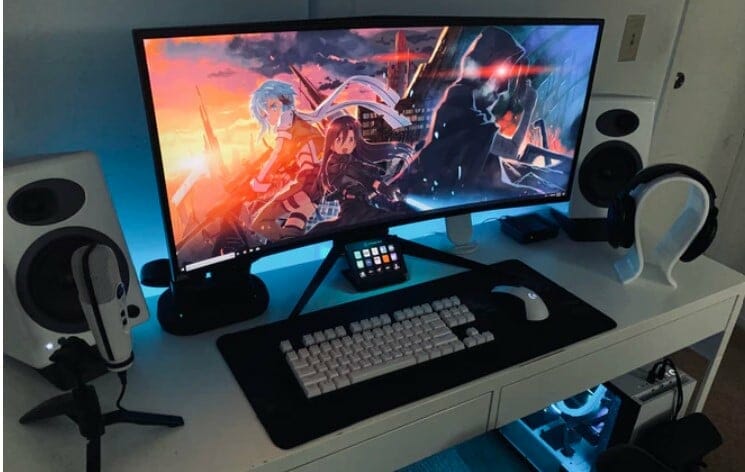
What Are the Advantages of LCD Monitors?
If you are looking for a new computer monitor, choose LCD monitors. The advantages of LCD over CRT monitors are amazing.
What are the Disadvantages of LCD Monitors?
LCD is the best technology for most people, but it does have its downsides. The most obvious one is price. While LCD panels are getting cheaper, they're still more expensive than CRT displays.
Considering their superior features, they are worth the price.
How is LCD Monitor Picture Quality?
An LCD Monitor gives sharp clear image quality with its high resolution. The high resolution means viewing more pixels on the screen for a superior picture. Combining super-resolution, vivid colors, and extreme brightness, LCD monitors will amaze you. Nonetheless, when looking for your movies monitor, it is essential to go for high-resolution models.
Their various resolutions include;
- 1280 x 1024
- 1366 x 768 High Definition (HD)
- 1920 x 1080 Full High Definition (FHD)
- 1920 x 1200 Wide Ultra Extended Graphics Array (WUXGA)
- 2560 x 1440 Quad High Definition (QHD)
- 3840 x 2160 4K or Ultra High Definition (UHD)
- 7,680x 4,320 8K
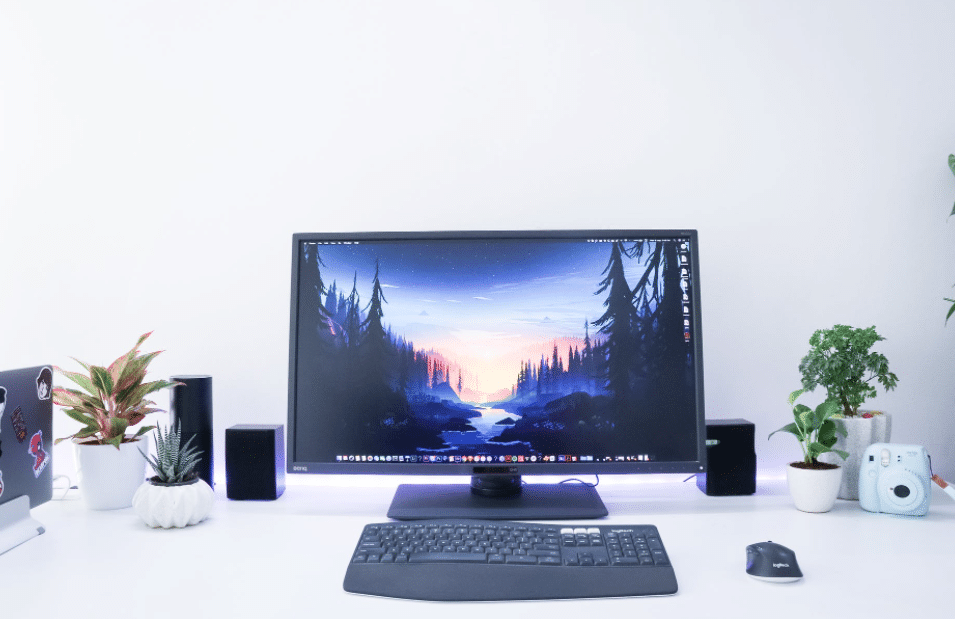
What is the Average Price of LCD Monitors?
The price of an LCD monitor depends on its size and features. Generally, prices range from roughly $150 to over $2000, although some models may be less expensive or more expensive.
It is possible that buying one of the less expensive models could save you money in the long run, and it is also possible that buying one of the more expensive models could save you money in the long run.
Prices also differ between various manufacturers.

What is the Energy Consumption of LCD Monitors?
There are various models of LCD monitors on the market. The power consumption of each model depends on the display size, resolution, brightness, etc. The power consumption of a 19-inch LCD monitor averages around 20 watts.
Power Consumption of Monitor LCD by Screen Size
Monitor Screen Size | LCD |
|---|---|
15 inches | 15 Watts |
19 inches | 20 Watts |
22 inches | 30 Watts |
37 inches | 60 Watts |
42 inches | 80 Watts |
What is the Lifespan of LCD Monitors?
The life expectancy of an LCD panel is about 30,000-60,000 hours. This is equivalent to 10-20 years of normal usage.
What are the LCD Monitor Brands?
There are various brands that manufacture LCD monitors. Some of the most common brands include:
- Lenovo such as Lenovo l22e 20 21.5-inch LCD backlit lcd monitor
- DELL such as dell 2407wfp 24-inch widescreen ultrasharp lcd monitor
- Samsung such as Samsung 32 curved 1920x1080 HDMI 60hz 4ms fhd lcd monitor
- Acer
- HP
- LG such as LG 34 ips lcd ultrawide fhd freesync monitor black
- Sanyo
- Sony
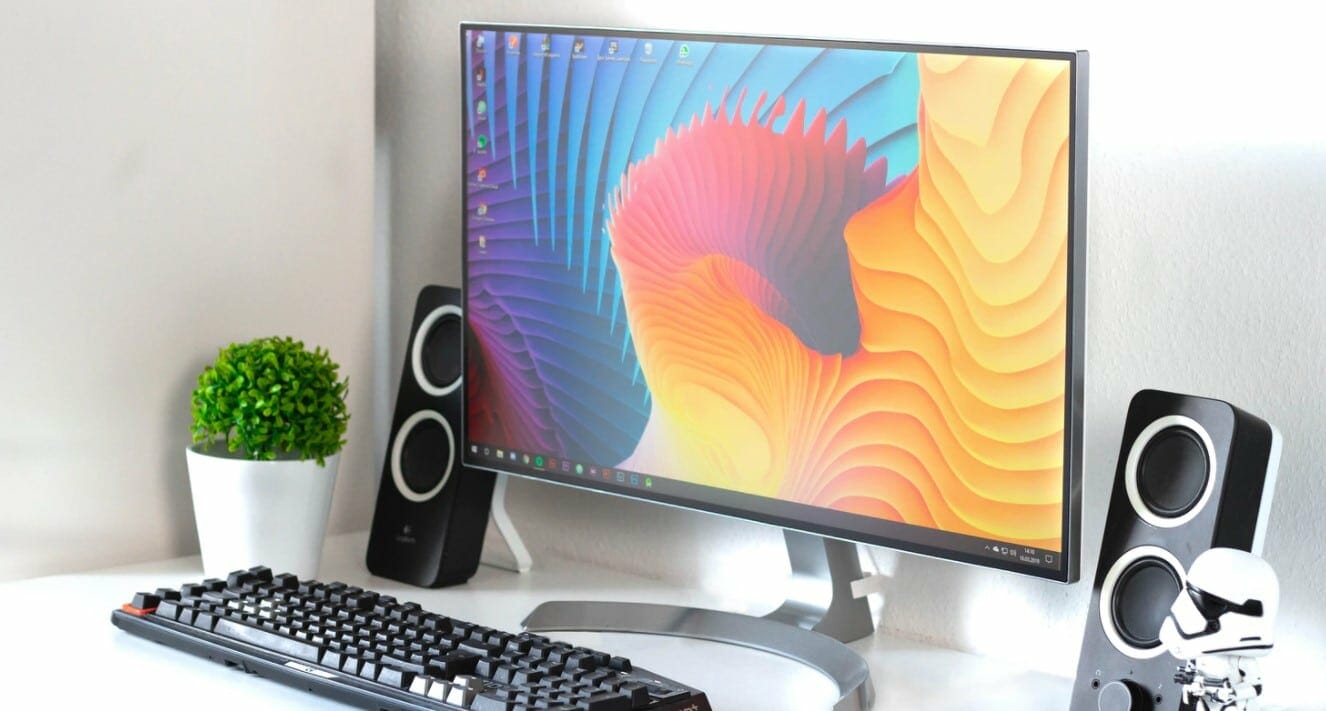
All these brands are well-known in the industry and they sell good quality LCD monitors.
What are the Best LCD Monitors for Different Professions?
Huge number of professionals enjoy numerous benefits of LCD technology. No matter what you do, whether you use your computer monitor for editing videos, graphic design, programming, or if you are someone who plays computer games frequently, you will need the best LCD because of its great features.
Used by Professionals
Graphic Designers
LED monitors (a form of LCD) are your best choice as monitors for graphic design. They are a bit pricier than VA panels but the difference in performance is worth it. You get a faster response time and better color rendition while keeping everything within a budget.
Photographers
If you are a photographer, working with monitors for photo editing is as important as the camera you work with. The key feature you should look for is backlight. LED's (a form of LCD) will have brighter, sharper blacks than that of an regular LCD, making them ideal for the digital photo editor. The fact is also that you won't have to spend a fortune as there are many affordable options.
Architects
When looking for a monitor for architects one should focus on color, brightness, and contrast. Optimal color performance and resolution is what most monitors for architecture are equiped with. We should also point out that best monitors for CAD and similar demanding software share similar features and technology.
Traders
Without a shadow of a doubt, to trade without hinderence you will need the best monitor for traders out there. The screen size matters, with better resolution, you get the better image quality, and most importantly with flicker free, and anti-glare screen features, you won't to strain your eyes in artificial light.
Programmers
In this category LCD monitor represents an excellent choice. You can have all features of a business-style monitor with full customibility according to what your work requires. We must point out that you should look at monitors for programming that provide vibrant colors and excellent viewing angles usually found in a 4k monitor - see Ultrawide Vs. 4K here - which may not be within your budget. If you must compromise than go for these budget monitors we reviewed.
For non-professionals, too, a good monitor is critical for daily use, whether you are creating spreadsheets, editing videos, or, surfing the Internet.
I have made it simple for you to pick the best computer LCD monitors currently by listing them in this section. I have evaluated each monitor based on its price, display technology, panel type, size, inputs, speakers, ergonomics, and video performance.
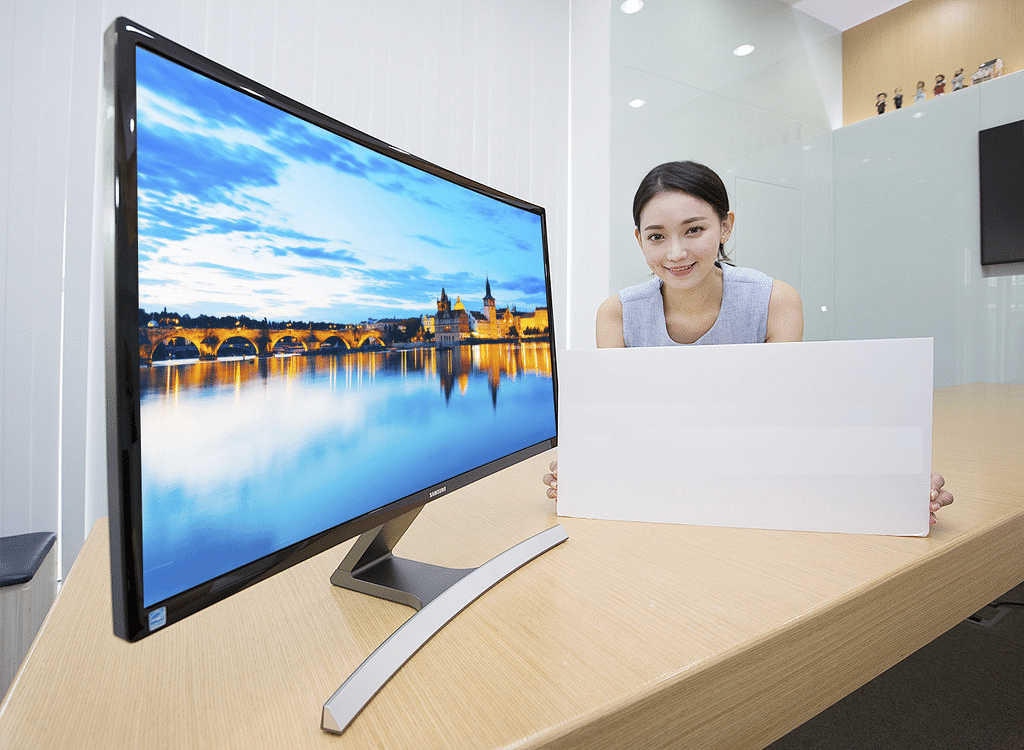
Will your next LCD monitor be one of these?
- AOC 24b1h 24 lcd monitor black
- Dell 27 LCD backlit lcd monitor se2719h
- Samsung 31.5 lcd curved 4k uhd monitor
- Samsung 31.5 lcd curved 4k uhd monitor dark blue-gray
- Lenovo l22e 20 21.5-inch LCD backlit lcd monitor
- Acer al2216wbd 22 lcd monitor
How to Buy a LCD Monitor?
If you want to buy an LCD monitor, there are several key factors to consider. They include screen size, screen resolution, response time, brightness, and refresh rate.
Screen Resolution
When buying an LCD monitor, one of the most important parameters to consider is screen resolution (the number of pixels). The higher the resolution, like in these 40 inch 4K monitors, the more you will see your documents (see here which monitors are our top choice for reading), spreadsheets, or photos on your screen. You'll also enjoy sharper images and smoother lines.
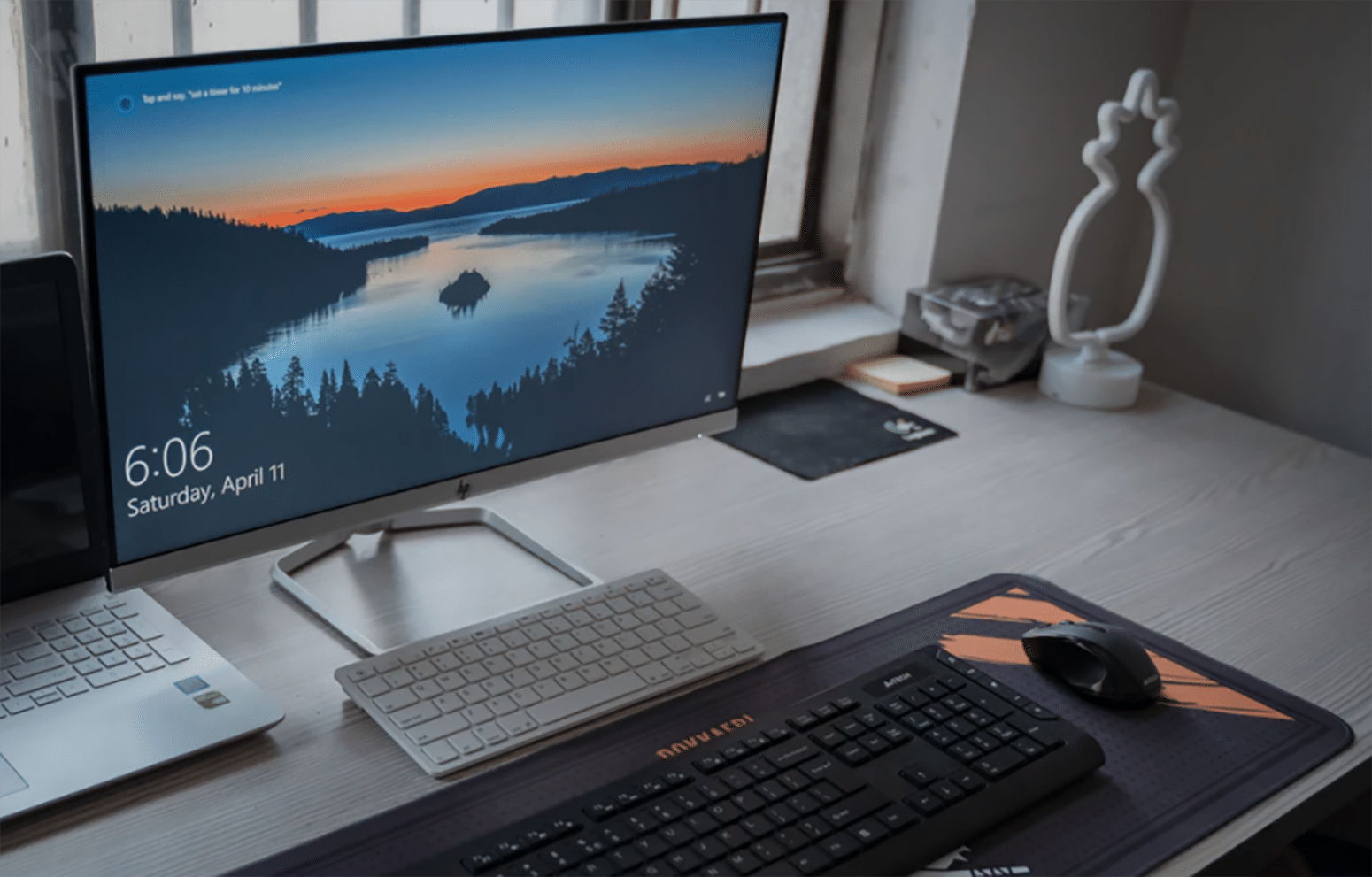
Refresh Rate
The refresh rate of a small LCD monitor, curved LCD monitor, or a touch screen LCD monitor is very important, especially when playing video games. The refresh rate is measured in Hertz or Hz. It refers to the number of times the picture on the screen is refreshed per second. With 60Hz there could be plenty of ghosting, but with 120hz monitors, or, even better, 144Hz monitors, the difference will be obvious.
The higher the refresh rate, the more fluid video content will appear on your screen. A refresh rate is crucial when you are playing games, so the safest bet is to go for a 240Hz monitor. Also, you will give your games an immersive feel with one of the ultra-wide computer monitors.
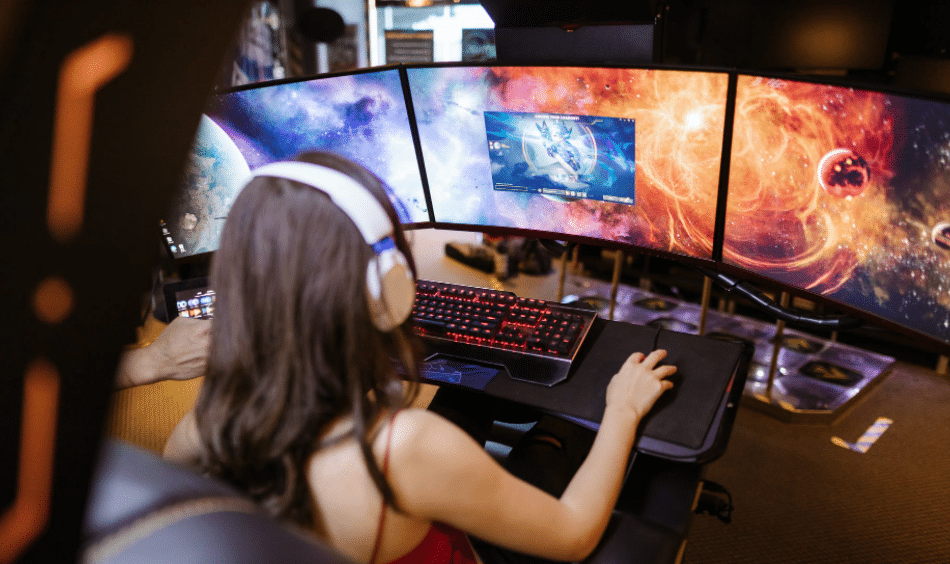
Screen Size
Screen size is also an important thing to consider when you're in the market for a new LCD monitor. The most common sizes used for monitors are 14, 17,21, 27,32 and 42 inches. Anything less than a 24 inch monitor would be considered a small LCD monitor.
Anything larger than 24 inches is considered a large LCD monitor.
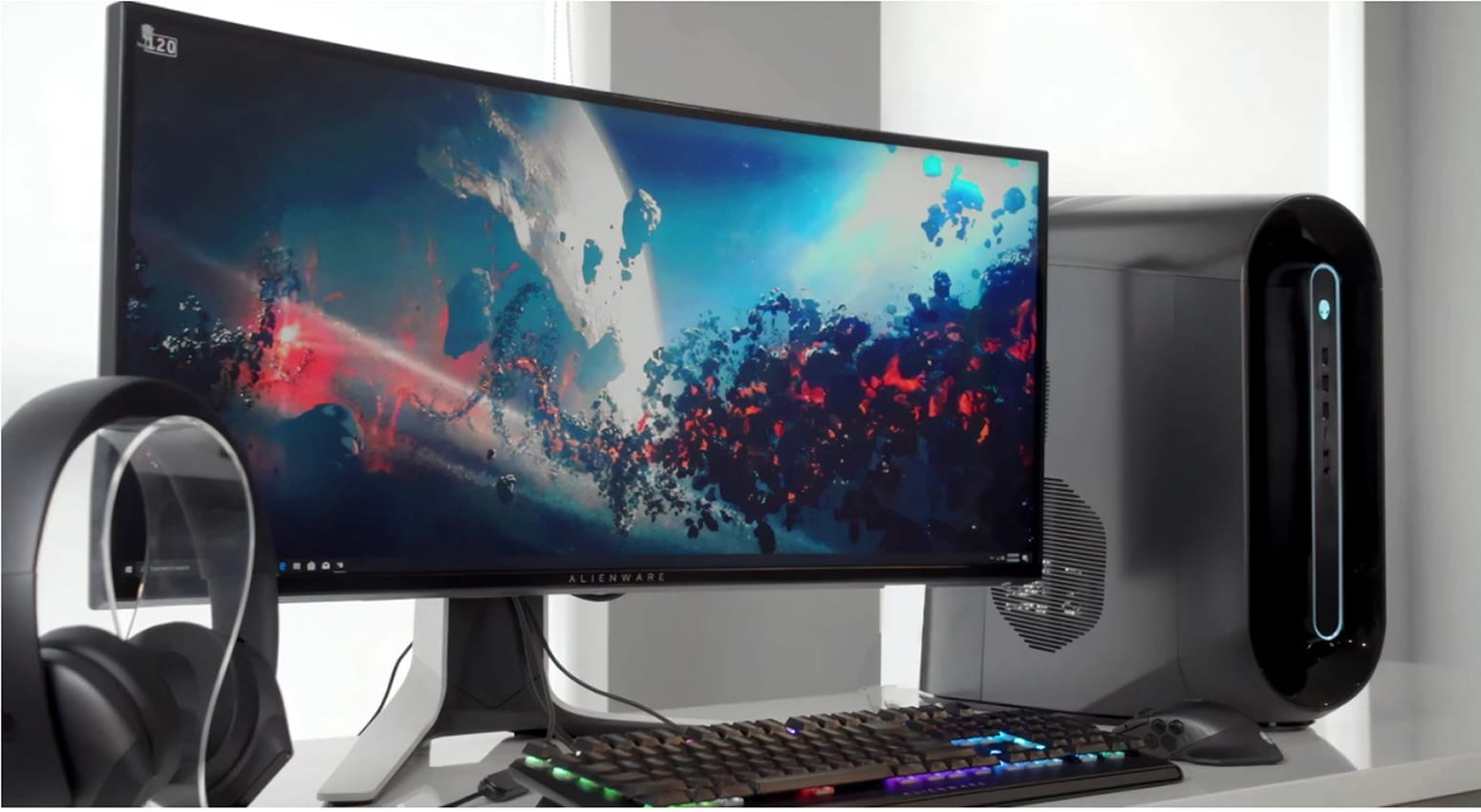
How to Install an LCD Monitor?
These are the required steps to install an LCD monitor. Your new monitor can come with all the necessary accessories you'll need, including cables and screws.
- The first step to installing any LCD monitor is to unbox the product. Feel free to take your time as you unpack and familiarize yourself with the product. Look at all of the contents and verify that everything is accounted for.
- The second step to installing an LCD monitor is gathering the tools required for the job such as a screwdriver, gloves, and screws and the cables needed.
Most monitors come with an instruction manual that can be read to better understand how to install the LCD screen. The user manual details the screen resolution, cable connection placement, and how to mount the monitor to its stand. - Connect your LCD monitor to a computer using a VGA, DVI or HDMI connection.
To connect an LCD monitor to a computer using a cable, insert one end of the cable into the appropriate port at the rear or the side of the computer. Connect the other end to the display.
How to Clean an LCD Monitor?
It is not uncommon for a TFT LCD monitor, commercial LCD display monitor, or compact LCD monitor to develop dark spots on their screens.
In most cases, this is caused by dust that accumulates as time goes by. If you don't clean your monitor from time to time, the dirt will pile up and might even cause damage to the device.
Are you afraid of making a mistake when cleaning it? Don't worry, I have a great solution for you. You can follow my simple guidelines and learn how to clean a monitor in a matter of minutes.
Turn off the Monitor
Before cleaning your monitor, use the power button to switch it off or unplug it from the electric socket if it is still connected. Leaving this step out may cause serious injury as you risk the danger of electric shock if you do not turn off your monitor first.
Remove the TFT LCD Color Monitor from Its Frame
If you want to clean your entire monitor, you will also need to remove it from its frame. You can do this by removing the screws at the back of the frame with a screwdriver. Then slide the monitor out of the frame.
Use Wipes to Clean the LCD Monitor
To clean the LCD monitor of your computer, find some monitor wipes. These are available at most office supply stores and are perfect for cleaning monitor screens.
Monitor Cleaning Kit
Many monitor experts recommend that you purchase a monitor cleaning kit because these kits include all the products that you will need to effectively clean your monitor. This kit contains a monitor cleaning solution, which you can use to clean any oil or dirt off the surface of your monitor.
What are the Connection Types of LCD Monitors?
There are a number of different connection types that a computer monitor can have. These include, but are not limited to:
- HDMI
- DisplayPort
- DVI
- VGA
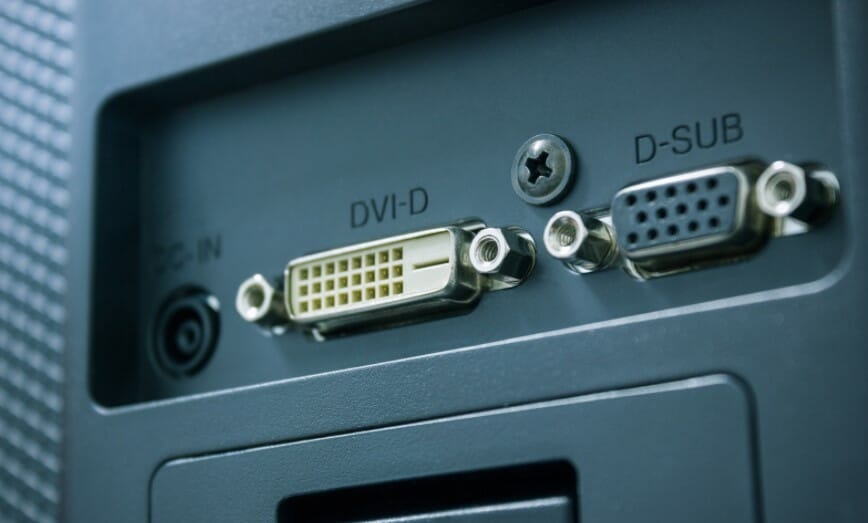
Each type, depending upon the needs of the user, has its own benefits and drawbacks. In order to determine which is the best for your individual needs, it is necessary to know what you are connecting with.
Are LCD Monitors Suitable for Gaming?
Yes, LCD monitors are suitable for gaming. High resolution, high refresh rates, and low response times are some of the features that make LCD monitors suitable for both professional gamers and amateur gamers.
The combination of high refresh rates and low response times enables gamers to react quickly and enjoy a smooth visual performance. Features like in G-sync monitors help eliminate motion blur and other issues that can reduce your performance.
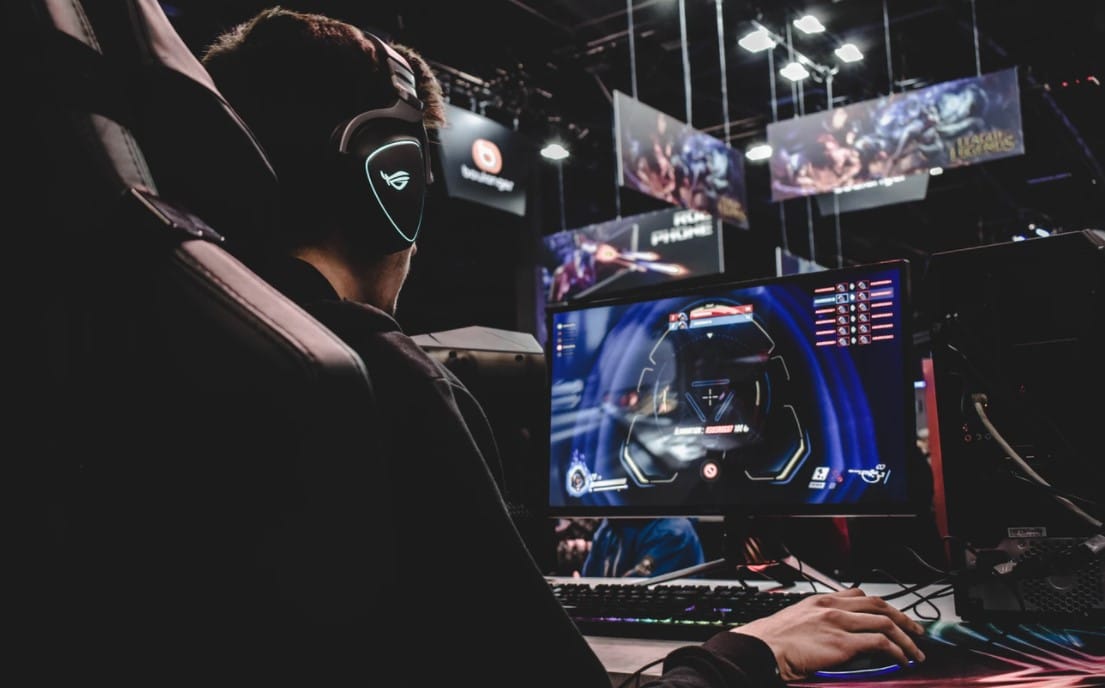
Are LCD Monitors Suitable for Business?
Yes, LCD monitors are suitable for business. Business owners with limited space, or workers traveling on business, now can take their lightweight computer monitor with them. Moreover, since convenience is your number one goal in that case, it helps to have monitors with speakers built into them already!
The best work monitors are superbly suited for the display of data, tables with rows and columns of numbers, figures, or other information. The performance is consistent and they help save energy as they are energy efficient. And for best productivity, if you are able to pull it off, using multiple monitors for which the bezel less monitors are best suited, is the right way to go.

How to Use LCD Monitors in a Car?
You can't expect your computer or old monitor to run in your car. You need a unit specifically designed to function in the car environment. A standard monitor will not last long mounted in a car, and could potentially cause a safety hazard.
It is possible to find a modified or reinforced display that can handle vibrations, temperature, and other elements when traveling.
In order to use an LCD monitor in a car, it should be modified with these characteristics;

Temperature
Electronic components can get hot. Vehicle monitors are made to withstand this kind of temperature.
It is also important that the monitor has some type of heat sink; the way it dissipates heat away from the circuitry. The most common heat sink is a base plate or duct that channels air through the back of the monitor. This helps prevent discoloration on the screen that can happen with some LCD monitors when they are left in a car continuously.
Tolerate Shock and Vibration
Most LCD car monitors sold in today's marketplace have been designed to function both inside and outside your vehicle.
A proper driver's car monitor should be able to tolerate shock and vibration, and at the same time prevent slip and fall in rough terrain.
They are typically well-shielded against RFI/EMI to prevent interference from cellular phone signals, thunderstorm lighting, and other types of interference that might disrupt the video signal from your device.
What is the Difference Between LCD and LED Monitors?
LCD stands for Liquid Crystal Display and LED stands for Light Emitting Diode. LCD and LED monitors differ in the way they are illuminated.
LCD monitors use cold cathode fluorescent lamps (CCFLs) to illuminate the display while LED monitors use diode-based lights. Also, in terms of eye strain, visuals, and energy consumption, LEDs outperform LCDs.
What is the Difference Between IPS and LCD Monitors?
IPS is a technology used in LCD screens. IPS monitors are preferred by professionals for their true-to-life color representation, wide viewing angles, and superior-high-quality image clarity.
They are the ultimate solution for professional photo editing, graphic designing, and video editing. Generally, LCD monitors are the most affordable and popular display options available today (see monitors under 200 dolars). These monitors are ideal for both office and home use, whether you want to game or watch movies. As for games exclusively, curved gaming monitors, which are mostly IPS, are especially comfortable for your eyes and they are probably the ones to turn to (see also top curved monitors overall)

What are the Other Types of Monitors?
Apart from LCD monitors, other types of computer monitors are;
- The first is the CRT or cathode ray tube monitor.
- Another type of monitor is an OLED Monitor. It is brighter, thinner, and with better color contrast than most other monitors.
- Plasma monitors
- Touch Screen monitor


